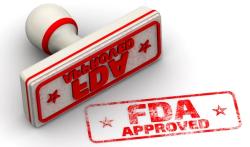© 2025 MJH Life Sciences™ , Patient Care Online – Primary Care News and Clinical Resources. All rights reserved.
Vukiet Tran, MD, on Evidence-Based Treatment of Upper Airway Cough Syndrome
Step-by-step treatment protocol for upper airway cough syndrome including nasal steroids, antihistamines, and proper administration technique.
You have diagnosed upper airway cough syndrome—now what? While UACS is the most common cause of chronic cough, it's also one of the most treatable when managed correctly. The key is understanding that this is an inflammatory condition, not an infectious one, and treatment success depends on both the right medications and the right technique.
Many patients fail initial UACS therapy not because the diagnosis was wrong, but because the treatment was not optimized. Medications were stopped too early, nasal sprays were administered incorrectly, or antibiotics were unnecessarily prescribed.
Patient Care® spoke with Vukiet Tran, MD, an emergency, family medicine, and long-term care physician, during the 2025 FMX conference in Anaheim. In this segment, Dr Tran provides a clear, evidence-based treatment protocol for UACS, including the medications that work, how to use them properly, and the critical treatment duration needed for sustained relief.
In this segment, Dr Tran covers:
- Why antibiotics have no role in UACS treatment
- First-line non-pharmacological approach (nasal rinses)
- Proper nasal corticosteroid technique for maximum efficacy
- The role of antihistamines for faster symptom control
- Minimum treatment duration to prevent recurrence
- Why short-acting vasoconstrictors should be avoided
Dr Tran is the co-founder and president of the Canadian Physicians' Pension Plan, and an assistant professor in the Department of Family and Community Medicine at the University of Toronto.
The following transcript has been lightly edited for flow and style.
Patient Care: Once UACS is diagnosed, what are the current best practices for treatment? Are there any therapies or combinations you’ve found most effective?
Dr Tran: First, don’t prescribe antibiotics—this isn’t an infectious problem. Treatment focuses on reducing inflammation in the nasal passages.
Start with nonpharmacologic therapy, such as nasal rinses, to clear secretions. Then move to pharmacologic treatments, like intranasal corticosteroids, which must be administered correctly. To spray the left nostril, use the right hand, and vice versa, aiming away from the septum. The steroid needs to be used consistently for at least two weeks to be effective.
For symptom relief, add an antihistamine. You can use a nasal antihistamine separately or a combination product that includes both a steroid and an antihistamine. The combination tends to provide faster symptom control.
Decongestant sprays that cause vasoconstriction should be avoided beyond two or three days, as they can cause rebound congestion. So, the ideal regimen is a nasal steroid and antihistamine, used correctly and consistently for at least two weeks.
Series Navigation
- Part 1: Defining Acute, Subacute, and Chronic Cough: A Clinical Framework
- Part 2: Recognizing Upper Airway Cough Syndrome: Key Clinical Clues
- Part 3: Differential Diagnosis: Distinguishing UACS from Asthma and GERD
- Part 4: Evidence-Based Treatment of Upper Airway Cough Syndrome (You are here)



